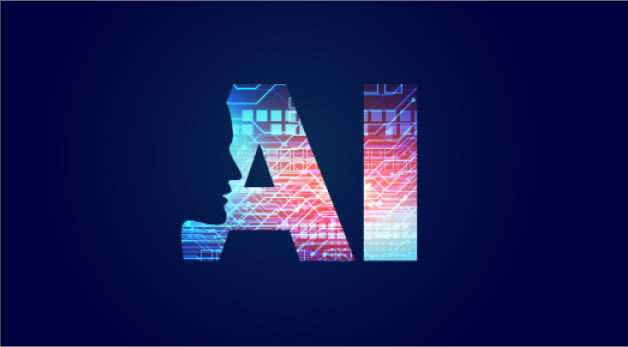On the first Saturday of this year, I asked the artificial intelligence language model, ChatGPT, to write my column on climate change. The output shocked many readers. For example, the general editor of the DailyTrust, Malam Hamza Idris, asked me which of the two of us (myself or the AI) was smarter. I replied that the AI was smarter but I’m more human and that’s something that the AI can never be. Well, ChatGPT returns to write today’s column on how it benefits education. After it was done writing, I asked it to give me an attention grabbing title. It gave me 10 options. I chose one. Enjoy.
One, automating the grading of written assignments: One of the key benefits of ChatGPT in education is its ability to automate the grading of written assignments. This can save educators a significant amount of time and effort by eliminating the need for manual grading.
ChatGPT can be trained to understand and grade written work based on specific criteria, such as grammar, vocabulary, and comprehension. This can be done by providing the model with a set of sample essays or written assignments that have been previously graded by a human. The model can then be trained to recognize patterns and characteristics in the writing that are indicative of a good or poor grade.
Once trained, ChatGPT can then be used to grade new written assignments by analyzing them for the same patterns and characteristics. This can be done quickly and accurately, without the need for human intervention. The model can then generate a grade for the assignment and provide feedback to the student on areas where they may need to improve.
It’s important to note that the accuracy of the automated grading will depend on the quality of the training data and the specific criteria used for grading. Additionally, ChatGPT may not be able to provide the same level of nuanced feedback as a human teacher, so it should be used as a supplement to, not a replacement for, human instruction.
Two, generating personalized learning materials: ChatGPT can be used to generate personalized learning materials, such as lesson plans and exercises, based on a student’s individual needs and abilities.
One way this can be done is by providing the model with information about the student’s current knowledge level, learning style, and goals. The model can then generate customized lesson plans and exercises that are tailored to the student’s specific needs. For example, if a student is struggling with a particular concept, the model could generate exercises that focus on that concept in more detail.
Another way this can be done is by providing the model with a set of questions or prompts, and having it generate relevant and personalized content based on these prompts. This can be used to create interactive and engaging learning experiences that are tailored to the student’s interests and level of understanding.
Additionally, ChatGPT can also be used to generate summaries and condense large amounts of text into more manageable study materials that are relevant to the student’s needs.
It’s important to note that the quality of the personalized learning materials generated by ChatGPT will depend on the quality of the training data and the specific information provided about the student. It’s also recommended to be used as a supplement to, not a replacement for, human instruction.
Three, providing 24/7 access to a virtual tutor: ChatGPT can be used to provide students with 24/7 access to a virtual tutor that can answer their questions and provide explanations in real-time. This can be particularly useful for students who are unable to access traditional in-person tutoring or who need help outside of regular class hours.
To do this, ChatGPT can be trained on a large dataset of questions and answers, along with explanations and examples. Once trained, the model can be used to respond to students’ questions in a conversational manner, providing accurate and relevant answers and explanations. This can include answering simple questions about a specific topic, providing detailed explanations of complex concepts, and even working through practice problems or exercises with the student.
This can help to bridge the gap between the student and teacher, creating an interactive and engaging learning experience that can help students to better understand and retain the material.
It’s important to note that the quality of the answers and explanations provided by ChatGPT will depend on the quality of the training data and the specific questions being asked. Additionally, ChatGPT may not be able to provide the same level of nuanced feedback and guidance as a human tutor, so it should be used as a supplement to, not a replacement for, human instruction.
Four, enhancing language learning: ChatGPT can be used to enhance language learning by providing students with opportunities to practice and improve their reading, writing, and speaking skills in a foreign language.
One way this can be done is by training ChatGPT on a large dataset of text in the target language, and then using the model to generate exercises and activities that help students to practice reading and comprehension skills. This can include exercises such as multiple choice questions, fill-in-the-blank, and translation exercises.
Another way this can be done is by using ChatGPT to generate personalized conversation prompts and exercises. This can help students to practice their speaking and listening skills, as well as improve their fluency and comprehension.
ChatGPT can also be used to provide feedback on written work, including grammar and vocabulary, giving personalized feedback and suggestions for improvement.
It’s important to note that the quality of the language learning materials and exercises generated by ChatGPT will depend on the quality of the training data and the specific language being studied. Additionally, ChatGPT may not be able to provide the same level of nuanced feedback and guidance as a human tutor, so it should be used as a supplement to, not a replacement for, human instruction.
Five, creating interactive and engaging educational content: ChatGPT can be used to create interactive and engaging educational content, such as games and simulations, that can help to make learning more fun and engaging for students.
One way this can be done is by using ChatGPT to generate interactive story-based games and simulations that help students to learn and practice different concepts and skills. For example, a game could be designed around a historical event, where students have to make decisions and solve problems based on the information they have learned.
Another way this can be done is by using ChatGPT to generate interactive chat-based scenarios where students can practice their communication and problem-solving skills. This can include role-playing scenarios, such as simulations of job interviews or customer service interactions.
ChatGPT can also be used to generate trivia-based games, quizzes, and other interactive content that can be used to test and reinforce students’ knowledge of specific topics.
It’s important to note that the quality of the interactive and engaging educational content generated by ChatGPT will depend on the quality of the training data and the specific concepts or skills being taught. Additionally, ChatGPT may not be able to provide the same level of nuanced feedback and guidance as a human teacher, so it should be used as a supplement to, not a replacement for, human instruction.
However, it is important to note that these benefits are dependent on the quality of the training data used to train ChatGPT and the specific application it is being used for.

 Join Daily Trust WhatsApp Community For Quick Access To News and Happenings Around You.
Join Daily Trust WhatsApp Community For Quick Access To News and Happenings Around You.


